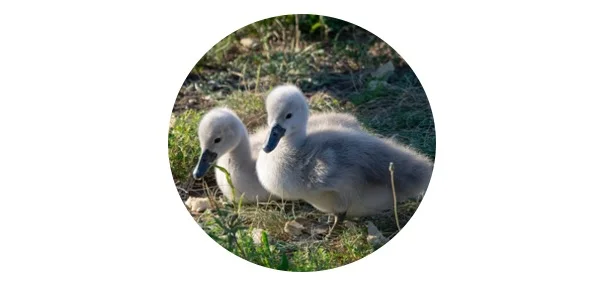Baby Starlings: Description, Pictures, & Fun Fact
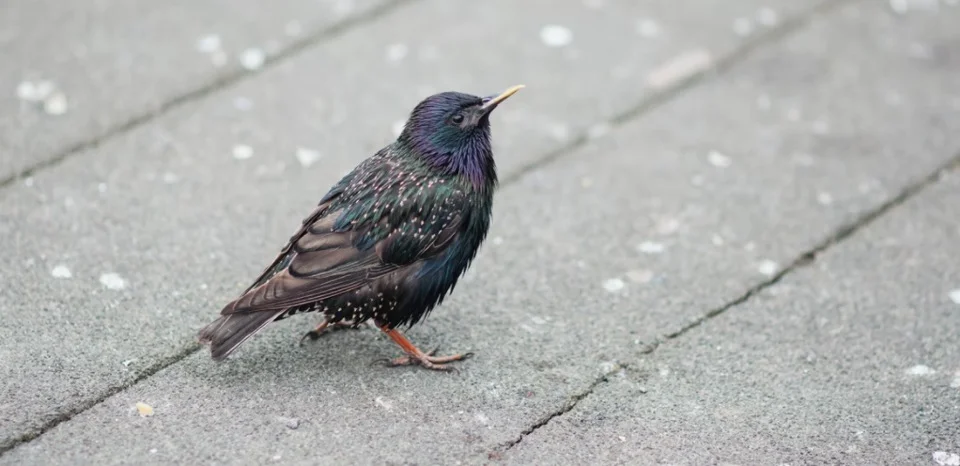
Table of Contents
Baby Starlings: All You Need To Know
When starling chicks hatch, they are as small as most other birds. The highest ridge of the beak (the culmen) is around 8 mm long, and their legs (tarsus) are just 9 mm long.
How much does a baby starling weigh?
A European Starling newborn weighs just 6.4 grams on average. During the first eleven to twelve days, baby starlings grow rather quickly. They normally weigh roughly 71 grams when they reach this age.
They’ll grow another gram every day for the following week, so starling chicks will weigh roughly 78 grams after 18 days. This is usually the maximum weight the chicks would attain before dropping to roughly 71 grams around day 21 or 22.
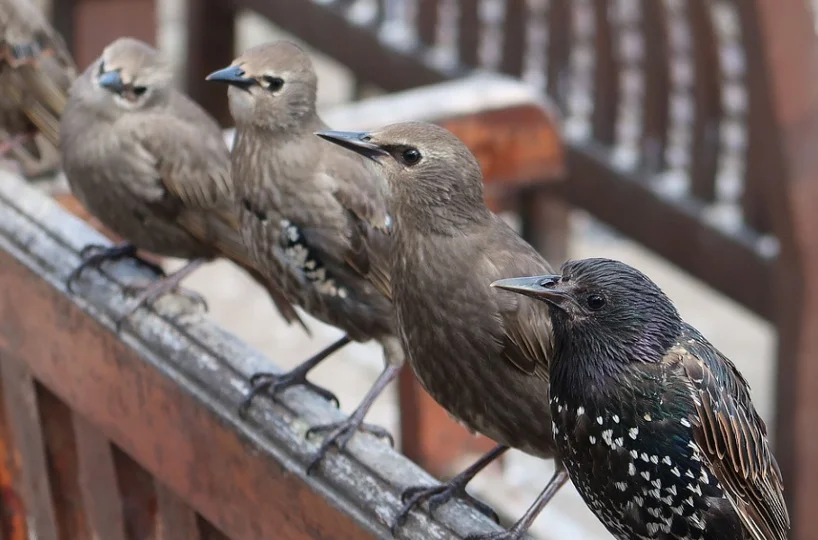
What does a juvenile starling look like?
Juvenile Starlings are almost the same size and shape as adults. They are mostly light greyish-brown all over, with a light chin and buffy white breasts with brown points. The bill is lengthy and gloomy. The margins of the wing and tail feathers are cinnamon coloured.
What is a baby starling called?
Baby starlings have no special names; instead, they are referred to as a chick, hatchling, nestling, or fledgling. Birdwatchers and ornithologists seldom use the word “Baby,” preferring to use one of the other titles indicated, depending on the stage of the starling’s life.

What do baby starlings eat?
Starlings feed their young with a combination of tiny, soft-bodied invertebrates that both the male and female bring back to the nest. This includes beetles, caterpillars, millipedes, crane fly larvae, grasshoppers, and crickets, depending on their environment.
When the chicks are ready to feed, these little objects are offered to them shortly after hatching. Larger insects and a greater variety of food will be offered as the nestlings get older. Before the young hatch, parents will often bring food items to the nest, accumulating a modest food supply to ensure the nestlings have adequate nourishment.
In general, both the male and female will share the responsibility of feeding the young. When young starlings leave the nest, adults will continue to feed them for a brief time before introducing them to the full adult starling diet.
What do starling egg look like?
Starling eggs are typically light blue, however they may sometimes be white. The usual length is 30 x 21 mm, and the weight is around 7 grams. Starlings typically lay clutches of four or five eggs and may have up to two clutches every mating season.
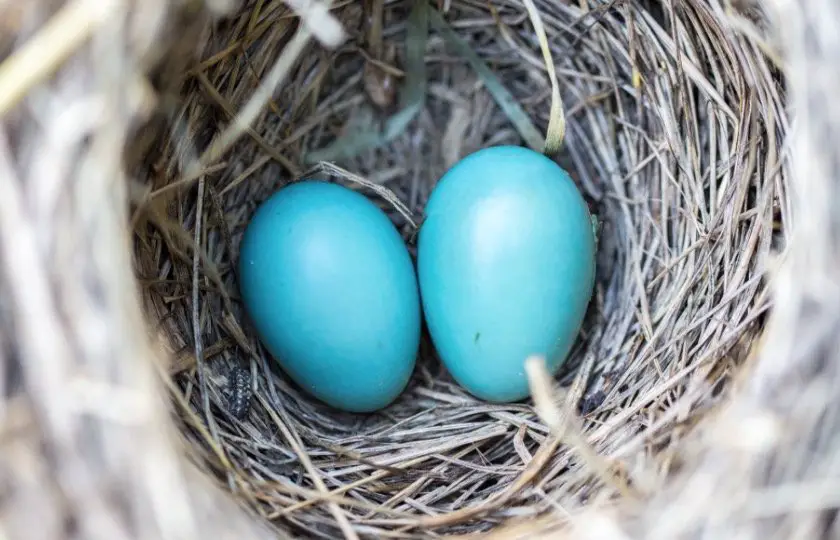
How long do starling eggs take to hatch?
A starling’s eggs typically hatch between 12 and 15 days after they are deposited. Both the male and female will share the incubation of the eggs and will often switch roles during the day. This is due to the fact that incubation periods may be as little as 10 to 30 minutes before a transition.
Although both parents will share incubation tasks, females are responsible for around 70% of overall incubation and will sit on the eggs all night.
When are starlings born?
Starlings have a mating season that begins in March and lasts until July in their native habitat. The mating season in the UK and other northern regions of their habitat is mostly between April and May, and it is generally significantly shorter. The breeding season in North America is later, frequently between September and December.
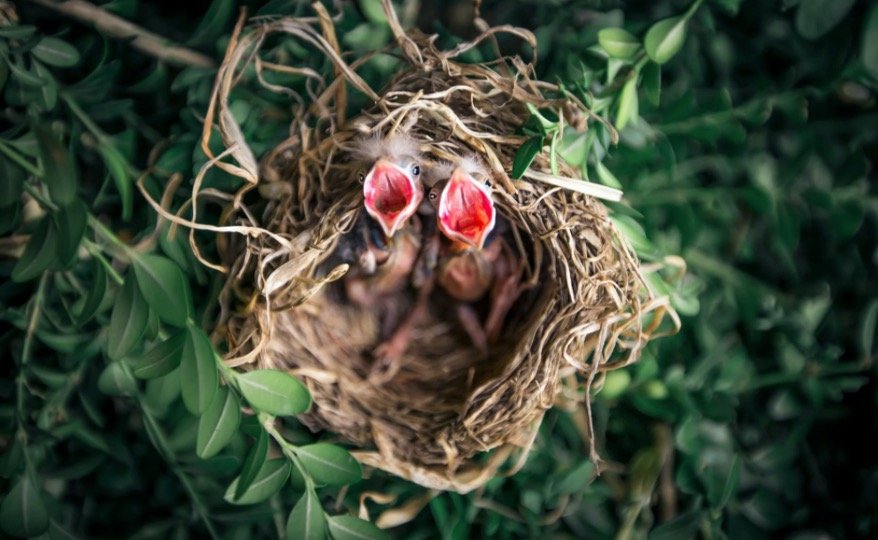
How do starlings feed their chicks?
When the chicks are small and freshly born, their parents bring back soft-shelled insects and gently insert them in the pleading and hungry chicks’ throats. Feeding their chicks is a time-consuming operation for the parents, with feeding sessions ranging from 100 to 300 times each day on average.
Food is carried back to the nest every 14 minutes on average. The busiest periods of day are in the mornings and late afternoons, when starlings may feed their young up to 20 times each hour.
When can baby starlings fly?
In general, newborn starlings can fly when they are around 19 days old, although this might vary by a day or two depending on the individual. Although they can normally fly pretty well at this time, this does not always imply that they will leave the nest.
Before they can fly, starling nestlings will practise their wings and legs in the nest to prepare for the outer world.
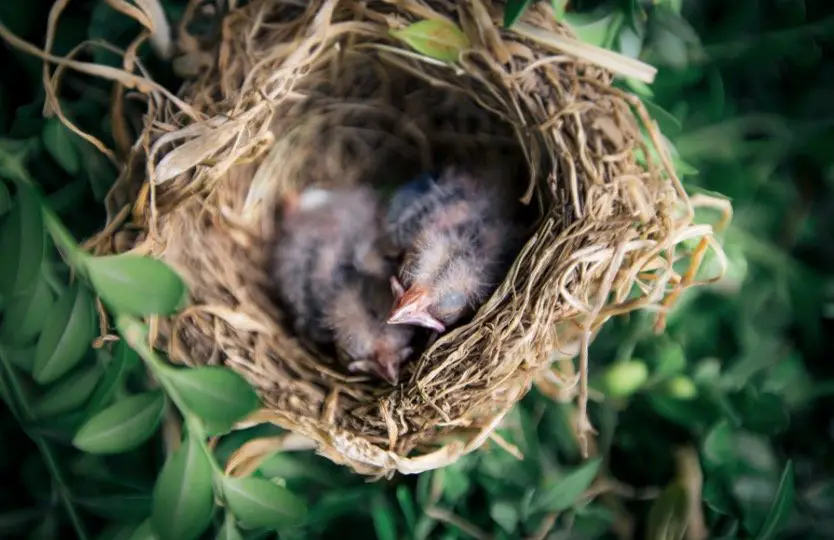
When do baby starlings leave the nest?
The majority of starling chicks, on average, fledge the nest when they are around three weeks old (21 days). However, it is not uncommon for them to stay in the nest for an extra day or two.
Once they’ve fledged, they usually have most of their feathers and can fly for lengthy periods of time, but they won’t usually move very far away from the nesting place.
Fledgling starlings are fed by their parents during the first few days after leaving the nest. They will perch in the trees around the nest and wait to be fed.
Where do starlings nest?
Starlings often construct their nests in holes and cavities, primarily in trees. Houses, buildings, nest boxes, and ancient Woodpecker cavities are other popular haunts. The most important necessity is a hole or hollow.
Once a suitable spot has been identified, the nest cavity will be filled with a combination of grass, twigs, and pine needles. Feathers, thread, paper, plastics, and fabric are examples of other materials that may be employed.
The cup’s lining may be a combination of moss, wool, fine grass, feathers, fine bark, and even paper. In certain cases, nests may rise more than 18 metres above the ground, while the normal height is between 3 and 8 metres.
Do starlings reuse nests?
In general, starlings will not utilize the same exact nests, although they have been observed to construct on top of previous ones when it is appropriate. On average, it is estimated that one-third of females will return to their prior nesting place and site.
Most starling colonies return to the same mating grounds each year, but their fledged offspring will usually join up and create new colonies in various places.
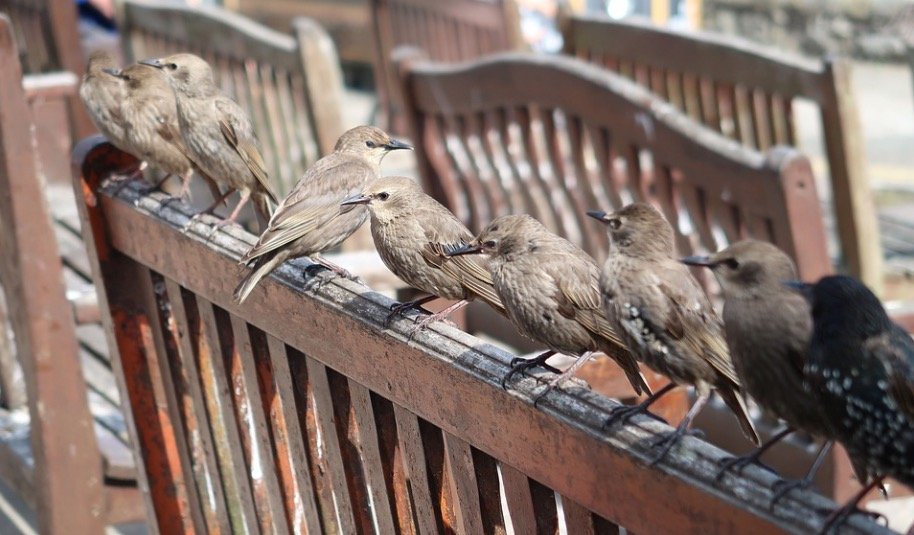
How long do starlings stay with their parents?
When young starlings leave the nest and reach the fledgling stage, they are normally more than capable of foraging on their own; nonetheless, parents will often feed them for the first one or two days after they leave the nest.
In most situations, fledglings rely on their parents for 10 to twelve days after leaving the nest. During this stage, the percentage of food given by the parents gradually decreases, and young starlings are forced to fend for themselves.
When juvenile starlings reach the age of independence from their parents, they often sleep communally with other young starlings and eat in mixed groups that include adults and other juveniles.
Do starlings mate for life?
Starlings do not regularly pair for life. They are mostly monogamous, which means they raise a brood with a single mate every breeding season, albeit this may only be for one season or brood.
Starlings are also polygamous in certain situations, which means that males may have numerous partners throughout a mating season and end up having multiple broods with various females. Male starlings will regularly begin to defend their mates four days before egg-laying starts after they have found a partner.
This guarding entails carefully following the female as she forages for food and driving away rival males. When the male seeks to attract a second mate at another nest location nearby, this guarding behaviour may come to an end.
What do you do if you find a baby starling?
When you locate a newborn starling, the first thing you should do is assess whether it is a nestling or a fledgling, since this will influence whether you need to act. If the starling is still a fledgling, it should be OK to let it alone.
It’s usual for newly fledged birds to spend a day or two on the ground before their flying feathers completely mature. It’s better to maintain a careful check from a distance, since the parents are normally nearby in a tree keeping an eye on things.
The only time you should interfere with a fledgling is if there are any risks or dangers around. For example, if they are close or on the road, or if they have pets that may easily catch the baby starling.
Nestling starlings are easily distinguished because they have less or no feathers. If you determine that it is a starling fledgling and that it seems to be healthy, your best hope is to see if you can find the nest and place it back in there while the parent is not around, with as little disruption as possible.
It’s a frequent myth that putting a young bird back in the nest would cause the parents to reject it. Starlings (and other birds) have poor senses of smell and will not reject their young if they have been touched by people.
If the baby starling fledgling seems damaged or unwell, it is not recommended that it be returned to the nest, since it may have been rejected. In this situation, you should place the starling chick inside a cardboard box lined with paper towels before contacting your local wildlife authority or specialist.
Why can't I raise the starling chick myself?
While it may be tempting to nurture the newborn starling on your own, we believe it is best left to the professionals. It’s a great gesture to think of nurturing the tiny starling chick to full health and then releasing it into the wild, but they do need particular diets and feeding schedules.
There are several resources on the internet for rearing starling chicks, although as previously said, it is normally best left to specialists.
